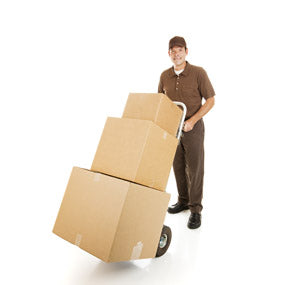The day I realized my garage ceiling could hold more storage than all my floor cabinets combined was the day I stopped parking outside.
Utilizing your garage's storage space to its full potential is key to successful garage organization. There are a lot of folks, however, who feel that using ceiling storage in their garage is just too dangerous. But here's what most homeowners don't understand: overhead storage isn't dangerous when you follow proper installation and usage rules. The real danger comes from sticking with a cluttered garage instead of safely using the ceiling space to fix the problem.
Many people avoid overhead storage because they've heard horror stories about racks falling or ladder accidents. What they don't realize is that these failures happen for very specific, preventable reasons. The Consumer Product Safety Commission documented 55 reports of overhead storage racks falling from ceilings in 2022, but in every case, the failure traced back to ignoring one of five critical safety rules.
When you follow these rules, overhead storage becomes one of the safest, most effective solutions for garage organization. Here's exactly what you need to know to join the homeowners who've successfully reclaimed their garage space without creating safety risks.
Rule #1: For overhead storage, don't build your rack, buy it
Engineered racks are load-tested to specific weight capacities that DIY builds can't guarantee
The first mistake homeowners make is assuming they can build a better rack than the engineers who design these systems professionally. You might think you're saving money by building your own platform, but you're actually creating liability you can't afford.
Commercial engineered overhead racks undergo rigorous testing protocols that determine exact weight limits under different load conditions. For example, a typical 4x8-foot rack rated for 600 pounds has been tested with distributed loads, point loads, and dynamic stress scenarios that replicate years of real-world use. Your DIY rack made from 2x4s and eye bolts simply hasn't undergone this testing.

Pre-manufactured racks include proper hardware and mounting systems designed for garage ceiling installation
The second reason to buy rather than build involves the mounting hardware. Manufactured racks include lag screws specifically engineered for the rack's weight capacity, washers designed to distribute loads properly, and brackets that span multiple ceiling joists for optimal weight distribution.
When you build your own rack, you're guessing at hardware specifications that engineers have calculated precisely. The difference between using 1/4-inch lag screws and 3/8-inch lag screws isn't just cost—it's the difference between 200-pound capacity and 400-pound capacity. Most DIY builders underestimate these critical specifications.
BTW, the same load calculation principles that govern overhead rack safety also apply to wall-mounted cabinet installation where improper fastening leads to similar failures.
The third compelling reason is simple: it's really not that much cheaper.
As of press time for this article, the cheapest 4 x 8 sheet of plywood at the big box store is around $66 per sheet (Don't even think about using MDF or particle board. Way too heavy). Now, you will need at least another $30 of 2x4 stock plus $20-25 of hardware. Bottom line, you are into this for at least $120 or so, plus your time to build it. And that assumes you are OK with bare wood instead of finished paint.
On the other hand, you can buy a 4 x 8 unit made from painted steel, ready to bolt in place for under $200. Faster and pre-engineered, this is one of those things you want to buy.
Rule #2: Find and secure to ceiling joists, never just drywall
Use a quality stud finder to locate ceiling joists and mark their exact centers with a pencil
The foundation of safe overhead storage starts with finding the actual structural support in your ceiling. Most garage ceilings have joists spaced either 16 inches or 24 inches on center, but you need to locate them precisely rather than measuring and guessing.
Start with a quality electronic stud finder—not the basic magnetic models that detect nails. Look for units that can locate the edges of joists through drywall and distinguish between wood and metal. Run the finder across your ceiling in a grid pattern, marking both edges of each joist, then marking the center point between the edges.

For double-checking your measurements, drill a small exploratory hole with a long drill bit at your marked center point. You should hit solid wood within 1/2 to 5/8 inch (the thickness of your drywall). If you hit a void, adjust your position and try again. Never proceed with installation until you've confirmed solid wood at every mounting point.
Pre-drill pilot holes using the correct bit size for your lag screws to prevent wood splitting
Once you've located your joists, proper pilot hole drilling becomes critical for both safety and preventing structural damage to your ceiling joists. The pilot hole must be large enough to prevent the wood from splitting but small enough to ensure maximum holding power from the lag screw threads.
For softwood lumber (typical in residential construction), drill pilot holes at 60-70% of your lag screw diameter. This means a 1/4-inch lag screw needs a 5/32-inch pilot hole, while a 3/8-inch lag screw requires a 15/64-inch pilot hole. Use a drill bit designed for wood boring, and ensure it's long enough to penetrate your full intended depth.
For standard 1/4-inch or 3/8-inch lag screws, you need means minimum 3-inch penetration for full capacity. Since your drywall is typically 1/2 to 5/8 inch thick, you need 3 1/2-inch lag screws minimum for adequate penetration. Use washers under the lag screw heads to distribute the load across a wider area of the rack mounting bracket.
Hand-tighten the lag screws first, then use a socket wrench to achieve final tightness. Stop when the washer is firmly seated against the mounting bracket—over-tightening can strip the threads or crush the wood fibers, actually reducing holding power.
The actual installation of lag screws determines whether your overhead rack holds safely for years or fails catastrophically. Engineering standards require lag screws to penetrate at least four times their diameter into solid wood for basic holding power, with eight times the diameter providing full rated capacity.
Rule #3: Use the right ladder positioned correctly every single time
A great many (most) overhead storage accidents come about not from some installation failing, but instead from poor usage.
Using a step stool or chair instead of a proper ladder, putting the ladder in the wrong place, or putting too much weight in a storage bin lead to more accidents than any other cause.
The most common ladder mistake happens before you even start climbing. Homeowners grab whatever's convenient—a chair, step stool, or bucket—instead of using an actual ladder rated for overhead work. These improvised platforms create unpredictable stability problems that cause falls.
A proper ladder for overhead storage access should be rated Type I (250-pound capacity) or Type II (225-pound capacity), which includes your body weight plus any materials you're carrying. Step ladders work best for garage ceiling heights, typically requiring a 6-foot or 8-foot ladder to reach comfortably without overreaching.


The second critical mistake involves ladder positioning. For ceiling work, this means positioning your ladder directly next to your ceiling rack rather than off to the side.
When you position the ladder too far from your storage location on the rack, you're forced to reach and stretch while holding a heavy bin. This shifts your center of gravity outside the ladder's safety zone and dramatically increases fall risk. Instead, take the time to reposition your ladder for each storage location—the extra few minutes of setup prevents potential injuries.
The third major ladder safety error happens during the loading phase. Homeowners successfully install their overhead racks safely, then create danger by trying to lift heavy bins while standing on ladders. A fully loaded storage bin can weigh 60-75 pounds, which not only could exceed safe ladder capacity but dramatically increase the chances of he ladder tipping over as you reach out to put the bin on the rack.
There is a simple answer: buy smaller bins. Instead of the typical 27 gal bins, use the 14 gal which are the same length and width but half as tall. Not only is it much safer to lift 30 lbs rather than 60, but your back will thank you as well.
Rule #4: Never exceed manufacturer weight limits, even if the rack seems sturdy
Underestimating accumulated weight because it's impossible to accurately judge total load from ground level
Racks rarely fail, but if one is going to, overloading is the likely reason. Your rack might be rated for 600 pounds, but once you start loading containers, it becomes nearly impossible to accurately estimate your total weight from ground level. That "lightweight" Christmas decoration box might actually weigh 45 pounds when fully loaded with ornaments.
Only the most obsessed would weigh their bins before putting them on the rack (it happens, but come on...)
There is an easier way. If we are working with a standard 4' x 8' ceiling rack, they can physically hold about ten 27 gallon bins or twenty 14 gallon bins stacked two high. Focusing on the 27 gallon bins for the moment, that means if the rack can hold 600 pounds, the average bin can't weigh more than 60 lbs. That is a lot to haul up a ladder and lift onto the rack. That's why earlier, we recommended the 14 gallon size bin which would max out at 30 lbs. So here's the trick. An average travel suitcase filled with clothes weighs around 30 lbs. So, you can put up to twenty 14 gallon bins on a 600 pound rated rack if the bins you put up there don't feel heavier than your roll-on suitcase did on your last trip. Most of us remember what that was like and it's a good rule of thumb.
Using the storage rack itself as an anchor point for ropes, pulleys, or lifting systems
The second weight-related mistake involves using your overhead rack as a lifting point for rope and pulley systems. Some homeowners install elaborate lifting mechanisms to raise heavy items to rack level, then anchor these systems to the rack itself. We've also seen folks use the rack to lift something heavy like the front of a lawn tractor using a rope attached to a rack. This creates dangerous point loads that will break something.
Overhead storage racks are engineered for evenly distributed static loads, not dynamic point loads from lifting systems. When you use the rack as a pulley anchor point, you're applying forces in directions the rack wasn't designed to handle. These lateral and angular forces can cause bracket failure even with loads well below the rack's stated capacity.
If you need lifting assistance, there are racks that include a lifting system that lets you load it on the ground and then raise the rack to the ceiling. More pricy, of course, but worth it if you just don't want to deal with ladders.
Rule #5: Always use proper storage containers with secure lids
Loose items can fall and become dangerous projectiles when any container on the rack is moved or accessed
Container selection determines whether your overhead storage stays organized and safe or becomes a hazard waiting to happen. Loose items stored without proper containers create multiple dangers. When you access one container, vibrations can shift other loose items, causing them to fall unexpectedly.
A screwdriver falling from 8 feet above becomes a dangerous projectile. Small hardware items like nuts, bolts, or decorative objects can scatter across your garage floor, creating slipping hazards and making cleanup difficult. And then there's the guy that stores his snowblower on an overhead rack. The only safe way to store items on overhead rack is if they can not easily be jarred into falling. Bin storage is safe, as are cardboard boxes or other lightweight, flat items like a dog crate. A can of paint, or heaven help us, a snowblower, however, could easily fail and badly hurt someone. Put the loose stuff in a bin.

Secure containers prevent moisture damage and pest infiltration in ceiling-level storage areas
Garage ceilings experience greater temperature fluctuations than other areas, making moisture control critical for long-term storage success. Open containers or loose items accumulate condensation during temperature changes, leading to rust, mold, and deterioration of stored materials.
Quality storage containers with secure lids create moisture barriers that protect contents from humidity changes. Look for containers with gasket seals or tight-fitting lids with latches. This becomes especially important for fabric items, documents, electronics, and anything susceptible to moisture damage.
Pest control represents another advantage of proper containers. Mice, insects, and other garage pests can't access well-sealed containers, protecting your stored items from damage and contamination that occurs with open storage methods.
Properly sized containers with handles make safe loading and unloading possible without dropping items
The third container consideration involves safe handling during access. We spoke about using smaller containers weighing no more than 30 pounds total weight. Oversized containers become dangerous when full because they require two-person lifting or create unstable handling situations. We didn't speak about the need for solid handles.
Built-in handles or recessed grips make containers much safer to handle while climbing or working from ladder height. Smooth-sided containers without handles become slippery and difficult to grip securely, especially when wearing work gloves. That's why bins are preferable to cardboard boxes. The extra cost of containers with proper handles pays for itself in reduced drop risk and easier access.
Clear or translucent containers provide visibility without requiring you to open multiple containers to find specific items. This reduces the amount of handling required during retrieval and minimizes disturbance to adjacent containers.
Your garage ceiling is storage space waiting to be used safely
Overhead storage represents the single most effective way to reclaim garage floor space for parking and working. When you follow these five rules—buying engineered racks, securing to joists, using proper ladders, respecting weight limits, and using appropriate containers—you eliminate the safety risks that cause most overhead storage failures. While overhead storage maximizes vertical space, complementing it with wall-based solutions like slatwall panels provides accessible organization for frequently used items.

The transformation in your garage will surprise you. Floor space that was cluttered with seasonal items, sporting goods, and household storage suddenly becomes available for parking, workshops, or family activities. The overhead space that was going unused becomes highly organized storage that's easily accessible when needed but completely out of the way during daily use.
Remember that proper installation and usage aren't suggestions—they're requirements for safe operation. Take the time to do it right the first time, and your overhead storage system will serve you safely for decades. Cut corners on any of these five rules, and you're creating risks that can result in property damage, injuries, or worse. Following these rules ensures your overhead setup avoids the common pitfalls that doom most garage organization projects. Overhead storage works best as part of a complete garage organization strategy that includes wall-mounted, floor, and ceiling solutions working together.
Your garage ceiling is already there, engineered to handle substantial loads when you connect to it properly. Stop parking outside because you lack storage space, and start using the cubic feet of organized storage hanging right above your head.
Frequently Asked Questions About Overhead Garage Storage
Q: How much weight can my garage ceiling actually support?
A: Most residential garage ceilings can safely support 5-50 pounds per square foot, depending on whether you have engineered trusses (5-10 lbs/sq ft) or conventional joists (15-40 lbs/sq ft). For a typical 4x8-foot storage rack, this translates to 160-320 pounds for truss systems or 480-1,280 pounds for joist systems when properly distributed. If there is a room above your garage, you typically have a conventional joist. If there is attic space above you often have trusses. Always consult manufacturer specifications and consider professional assessment for heavy storage needs.
Q: Can I install overhead storage myself, or do I need professional help?
A: DIY installation will save you money, if you have experience with power tools, and follow the five rules. You'll need quality tools including an electronic stud finder, drill with appropriate bits, socket wrench set, and a proper ladder. Professional installation costs $200-500 but it does mean the only thing you will need to worry about is where to install them. Choose professional installation if you're uncertain about the type of ceiling construction you have, lack proper tools, or plan to store near maximum weight capacity.
Q: What's the difference between lag screws and other fasteners for overhead storage?
A: Lag screws provide superior holding power for overhead loads because they create mechanical threads in the wood rather than relying on friction like other fasteners. Use 1/4-inch to 1/2-inch diameter lag screws with minimum 2½-inch penetration into solid wood. Never use drywall screws, wood screws, or toggle bolts for overhead storage—they lack the holding power needed for safety.
Q: How do I know if my overhead storage rack is overloaded?
A: Monitor for visible sagging in the rack platform, any movement in ceiling-mounted brackets, unusual noises during loading/unloading, or cracks around mounting points.
Q: What items should never be stored overhead in my garage?
A: Never store flammable liquids like gasoline or propane overhead due to fire codes and safety risks. Avoid heavy tools exceeding individual container limits, glass items that could create dangerous debris if dropped, and electronics susceptible to temperature/humidity damage. Ideal items include seasonal decorations in sealed containers, camping gear, empty luggage, and craft supplies in weather-resistant containers.





